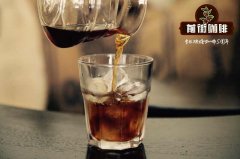Malawian Coffee production Malawian Coffee producing areas introduce what coffee producing countries in Africa

Professional coffee knowledge exchange more coffee bean information please follow the coffee workshop (Wechat official account cafe_style)
Gatunyu Kigio Farmers' Cooperative (FCS) is headquartered in Gatanga County, Mulan County. The association was registered on November 20, 1995 and includes the following coop plants in Kiambu and Muranga counties:
Gakurari
Muchai
Gichamuri
Wambaru
Atlas's first purchases from Gatunyu Kigio were in 2019, mainly from Gakurari factories. This is the first year that a cup of coffee in Mulang County caught our attention. We have learned that in 2018, the Kenyan Coffee exporters Cooperation (KCCE) invested a lot of money to educate Gatunyu Kigio farmers and employees on appropriate planting and picking techniques. This is probably why our 2019 selection of Gakurari coffee is so different. The full-time staff of each factory cleaning station is responsible for ensuring that factories in a particular society follow the same procedures for washing and drying coffee, so we are likely to see similar results from Muchai, Gichamuri and Wambaru in 2020.
Daniel ElBaradei (Daniel Mbaradi), manager of Gakurari, reports that the average fermentation time after depilation is 12-16 hours. The fermented coffee is washed in the concrete channel and is not soaked after fermentation. After washing, move the wet parchment to the skin drying table and spread it into a thin layer (about 1 inch). Dry for 2 days to remove moisture from the surface and parchment. At this stage, some manual sorting of parchment is carried out to eliminate any obvious defects. After the skin is dry, move the coffee to the main drying table, dry in plenty of sunlight for another 10-12 days, and rotate frequently. On very hot days, coffee is covered with canvas to reduce the dry temperature. These procedures, used by Gakurari's nearly 500 farmer members, are also used by other Gatunyu Kigio factories.
Almost every conceivable fruit is used to describe the college we arrived in 2019. Blackberries, raspberries, cranberries, peaches, mangoes, pineapples, limes, green grapes, plums, apricots and lemons are all descriptors for AA, AB and PB batches. They are undoubtedly one of our best coffee brands in Kenya this year, understand the investment of KCCE and Gatunyu Kigio FCS in the long-term business, and we are looking forward to what we will bring next year.
END
Important Notice :
前街咖啡 FrontStreet Coffee has moved to new addredd:
FrontStreet Coffee Address: 315,Donghua East Road,GuangZhou
Tel:020 38364473
- Prev

Kenyan Coffee output Kenyan Coffee extraction parameters how Kenyan Coffee flushes out berry flavor
Professional coffee knowledge exchange more information about coffee beans Please follow the coffee workshop (Wechat official account cafe_style) in 1893, John Patterson, a Scottish missionary, introduced coffee to Kenya. It is reported that the coffee seed was obtained from Smith Mackenzie, an agent of the British East India Company in the Yemeni port city of Aden. And then in Kibwezi near Mombasa, Kenya.
- Next

Flavor description of Panamanian Rosa Coffee A brief introduction to the characteristics and Price of Rosa Coffee Bean
Professional coffee knowledge exchange more coffee bean information please follow the coffee workshop (Wechat official account cafe_style) front street-jadeite manor blue standard summer rose proportion to share rose summer, is a variety first rose (Geisha) species was sent from the rose summer forest of Ethiopia in 1931
Related
- Beginners will see the "Coffee pull flower" guide!
- What is the difference between ice blog purified milk and ordinary milk coffee?
- Why is the Philippines the largest producer of crops in Liberia?
- For coffee extraction, should the fine powder be retained?
- How does extracted espresso fill pressed powder? How much strength does it take to press the powder?
- How to make jasmine cold extract coffee? Is the jasmine + latte good?
- Will this little toy really make the coffee taste better? How does Lily Drip affect coffee extraction?
- Will the action of slapping the filter cup also affect coffee extraction?
- What's the difference between powder-to-water ratio and powder-to-liquid ratio?
- What is the Ethiopian local species? What does it have to do with Heirloom native species?

